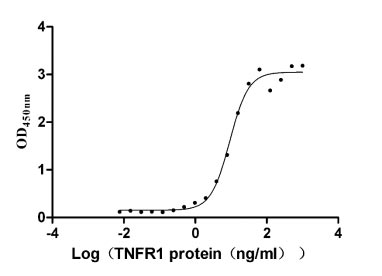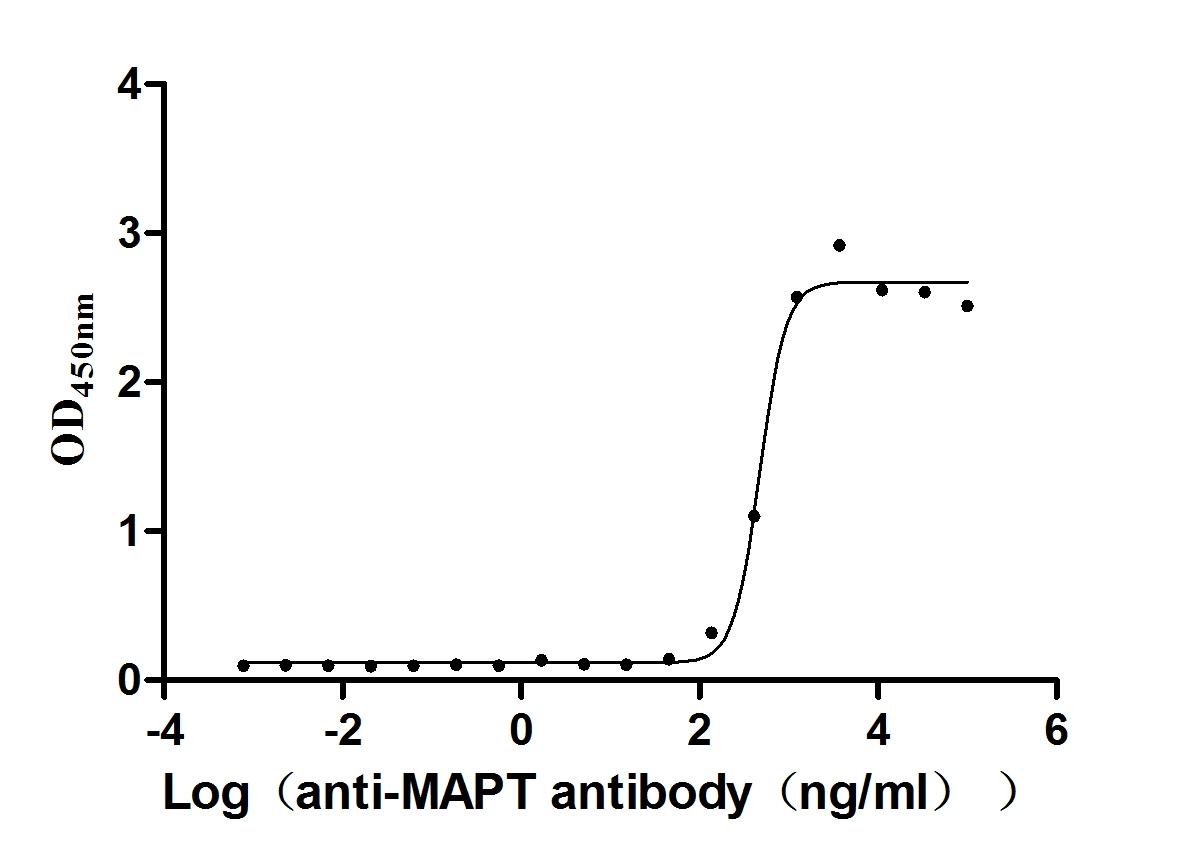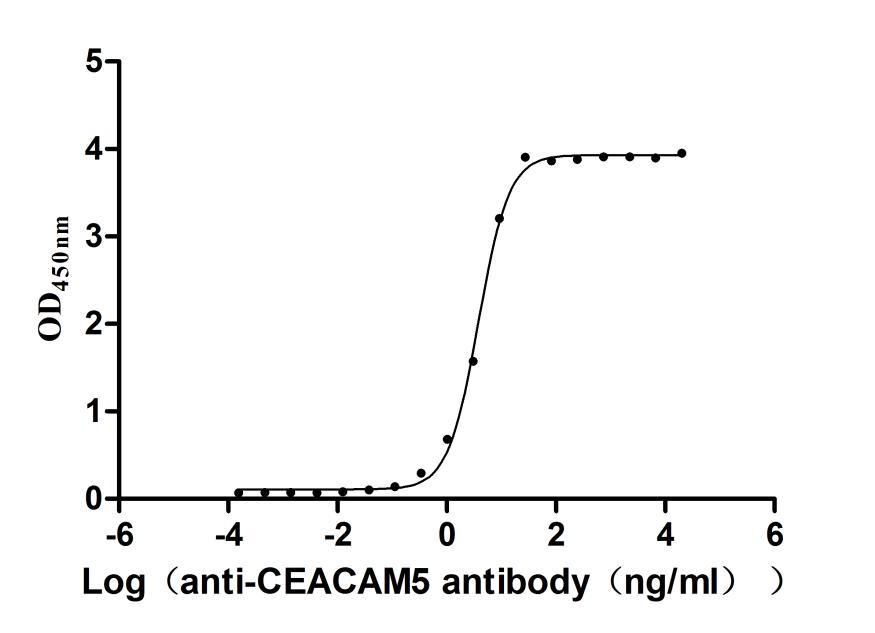Recombinant Human Late cornified envelope protein 3B (LCE3B)
-
中文名称:人LCE3B重组蛋白
-
货号:CSB-YP722575HU
-
规格:
-
来源:Yeast
-
其他:
-
中文名称:人LCE3B重组蛋白
-
货号:CSB-EP722575HU
-
规格:
-
来源:E.coli
-
其他:
-
中文名称:人LCE3B重组蛋白
-
货号:CSB-EP722575HU-B
-
规格:
-
来源:E.coli
-
共轭:Avi-tag Biotinylated
E. coli biotin ligase (BirA) is highly specific in covalently attaching biotin to the 15 amino acid AviTag peptide. This recombinant protein was biotinylated in vivo by AviTag-BirA technology, which method is BriA catalyzes amide linkage between the biotin and the specific lysine of the AviTag.
-
其他:
-
中文名称:人LCE3B重组蛋白
-
货号:CSB-BP722575HU
-
规格:
-
来源:Baculovirus
-
其他:
-
中文名称:人LCE3B重组蛋白
-
货号:CSB-MP722575HU
-
规格:
-
来源:Mammalian cell
-
其他:
产品详情
-
纯度:>85% (SDS-PAGE)
-
基因名:LCE3B
-
Uniprot No.:
-
别名:LCE3B; LEP14Late cornified envelope protein 3B; Late envelope protein 14
-
种属:Homo sapiens (Human)
-
蛋白长度:full length protein
-
表达区域:1-95
-
氨基酸序列MSCQQNQQQC QPLPKCPSPK CPPKSSAQCL PPASSCCAPR PGCCGGPSSE GGCCLSHHRC CRSHRCRRQS SNSCDRGSGQ QDGASDCGYG SGGCC
-
蛋白标签:Tag type will be determined during the manufacturing process.
The tag type will be determined during production process. If you have specified tag type, please tell us and we will develop the specified tag preferentially. -
产品提供形式:Lyophilized powder
Note: We will preferentially ship the format that we have in stock, however, if you have any special requirement for the format, please remark your requirement when placing the order, we will prepare according to your demand. -
复溶:We recommend that this vial be briefly centrifuged prior to opening to bring the contents to the bottom. Please reconstitute protein in deionized sterile water to a concentration of 0.1-1.0 mg/mL.We recommend to add 5-50% of glycerol (final concentration) and aliquot for long-term storage at -20℃/-80℃. Our default final concentration of glycerol is 50%. Customers could use it as reference.
-
储存条件:Store at -20°C/-80°C upon receipt, aliquoting is necessary for mutiple use. Avoid repeated freeze-thaw cycles.
-
保质期:The shelf life is related to many factors, storage state, buffer ingredients, storage temperature and the stability of the protein itself.
Generally, the shelf life of liquid form is 6 months at -20°C/-80°C. The shelf life of lyophilized form is 12 months at -20°C/-80°C. -
货期:Delivery time may differ from different purchasing way or location, please kindly consult your local distributors for specific delivery time.Note: All of our proteins are default shipped with normal blue ice packs, if you request to ship with dry ice, please communicate with us in advance and extra fees will be charged.
-
注意事项:Repeated freezing and thawing is not recommended. Store working aliquots at 4°C for up to one week.
-
Datasheet :Please contact us to get it.
靶点详情
-
功能:A structural component of the cornified envelope of the stratum corneum involved in innate cutaneous host defense (Probable). Possesses defensin-like antimicrobial activity against a broad spectrum of Gram-positive and Gram-negative bacteria, both aerobic and anaerobic species. Upon inflammation, may regulate skin barrier repair by shaping cutaneous microbiota composition and immune response to bacterial antigens.
-
基因功能参考文献:
- analysis of disease variants at the LCE3 cluster among the psoriasis patients in India PMID: 27048876
- Our data suggest that The LCE deletion, previously identified in patients with psoriasis, is not of a major importance in the development of PsA in Tunisian patients PMID: 24566688
- No evidence of association was seen between the LCE3C_LCE3B-del and psoriasis in 34 patients from 7 multiplex Tunisian families. No epistasic effect was found between the deletion and PSORS1 locus. PMID: 24485035
- Our meta-analysis demonstrates a significant association between psoriasis and the LCE3C_LCE3B-del polymorphism in Europeans and Asians, but no association with psoriatic arthritis. PMID: 23631431
- The LCE3C_LCE3B-del might play a role in familial psoriasis in the Tunisian population. PMID: 22926764
- Paediatric-onset psoriasis is associated with .......... LCE3C_LCE3B deletion PMID: 22512642
- LCE3C_LCE3B-del is a common risk factor for (auto)immune diseases PMID: 22384135
- results suggest that the Koebner phenomenon in psoriasis is unlikely to be dependent on the LCE3B/C genotype PMID: 22048733
- The findings indicate that the LCE3C_LCE3B-del is an important risk factor in the pathogenesis of psoriasis and that the LCE3C_LCE3B-del does not show an epistatic effect with the HLA-Cw6 allele on susceptibility to psoriasis in the northern Chinese PMID: 21711330
- A deletion of LCE3B and LCE3C genes may promote the development of allergic contact dermatitis PMID: 21995181
- This study provides evidence for an association between LCE3C_LCE3B-del and RA in non-Caucasian populations, and SNPs rs4112788 and rs4085613 tagging LCE3C_LCE3B-del were novel susceptibility factors for SLE. PMID: 21628307
- Our study confirms an association between the deletion of LCE3C and LCE3B and psoriasis in a Chinese population. PMID: 21509048
- LCE3C_LCE3B deletion is a susceptibility factor for Psoriatic arthritis, confirming the existence of a shared risk factor involving the epidermal skin barrier in autoimmune disorders. PMID: 21400479
- LCE3B/C deletion may have a role in psoriasis PMID: 21435436
- the deletion of LCE3C and LCE3B is a common genetic factor for susceptibility to psoriasis in the European, Chinese and Mongolian populations. PMID: 21107349
- Meta-analysis of gene-disease association. (HuGE Navigator) PMID: 20624365
- no genetic association between LCE3B and LCE3C deletions and atopic dermatitis PMID: 20376060
- Observational study of gene-disease association. (HuGE Navigator) PMID: 20376060
- we have verified a pleiotropic effect of a common genetic risk factor (LCE3C_LCE3B-del) for autoimmune diseases that is involved in both psoriasis and rheumatoid arthritis PMID: 20213803
- work suggested that homozygosity for a common LCE3C_LCE3B deletion contributes to the risk of developing chronic plaque type Psoriasis without psoriatic arthritis PMID: 20331852
- study confirms the recently published finding that the deletion of the two LCE genes is a susceptibility factor for psoriasis vulgaris with dosage effect PMID: 20016497
- Observational study of gene-disease association. (HuGE Navigator) PMID: 20213803
- Observational study of gene-disease association. (HuGE Navigator) PMID: 20331852
- LCE3C_LCE3B-del shows epistatic effects with the HLA-Cw6 allele on the development of psoriasis. PMID: 19169253
- Observational study of gene-disease association and gene-gene interaction. (HuGE Navigator) PMID: 20016497
- Observational study of gene-disease association and gene-gene interaction. (HuGE Navigator) PMID: 19169253
- paper describing nomenclature changes and expression in range of tissues and in response to UV PMID: 15854049
显示更多
收起更多
-
蛋白家族:LCE family
-
组织特异性:Skin-specific. Expression was readily detected in adult trunk skin, adult arm skin, fetal skin, penal skin, vulva, esophagus and tongue. Not expressed in the cervix, rectum, lung, colon, or placenta.
-
数据库链接:
HGNC: 29462
OMIM: 612614
KEGG: hsa:353143
STRING: 9606.ENSP00000335358
UniGene: Hs.553715
Most popular with customers
-
Recombinant Paguma larvata Angiotensin-converting enzyme 2 (ACE2), partial (Active)
Express system: Mammalian cell
Species: Paguma larvata (Masked palm civet)
-
Recombinant Human Tumor necrosis factor receptor superfamily member 1A (TNFRSF1A), partial (Active)
Express system: Mammalian cell
Species: Homo sapiens (Human)
-
Recombinant Mouse Microtubule-associated protein tau (Mapt) (Active)
Express system: Mammalian cell
Species: Mus musculus (Mouse)
-
Recombinant Human C-type lectin domain family 4 member C (CLEC4C), partial (Active)
Express system: Mammalian cell
Species: Homo sapiens (Human)
-
Recombinant Human Oncostatin-M (OSM), partial (Active)
Express system: Mammalian cell
Species: Homo sapiens (Human)
-
Recombinant Human Serine/threonine-protein kinase receptor R3 (ACVRL1), partial (Active)
Express system: Baculovirus
Species: Homo sapiens (Human)
-
Recombinant Human Cadherin-1(CDH1),partial (Active)
Express system: Mammalian cell
Species: Homo sapiens (Human)
-
Express system: Mammalian cell
Species: Macaca mulatta (Rhesus macaque)




















